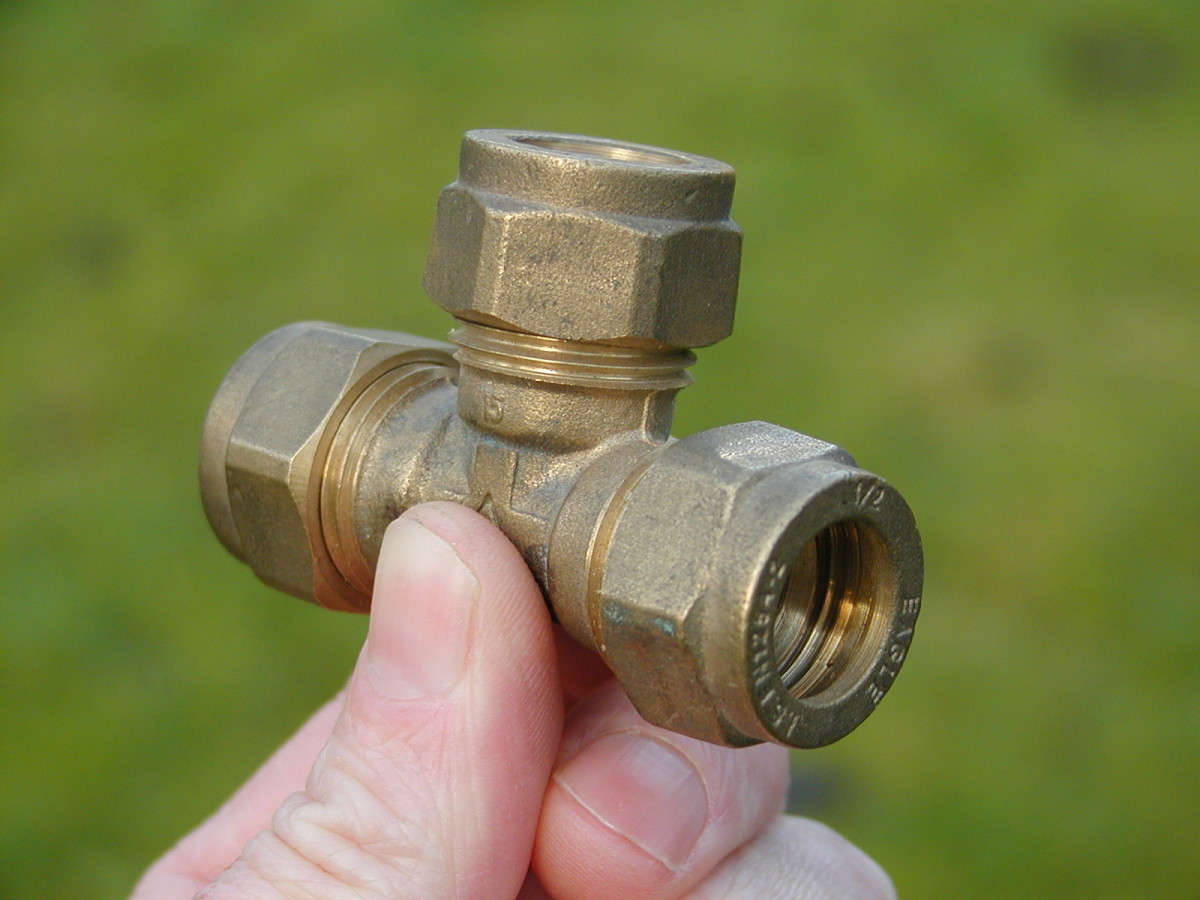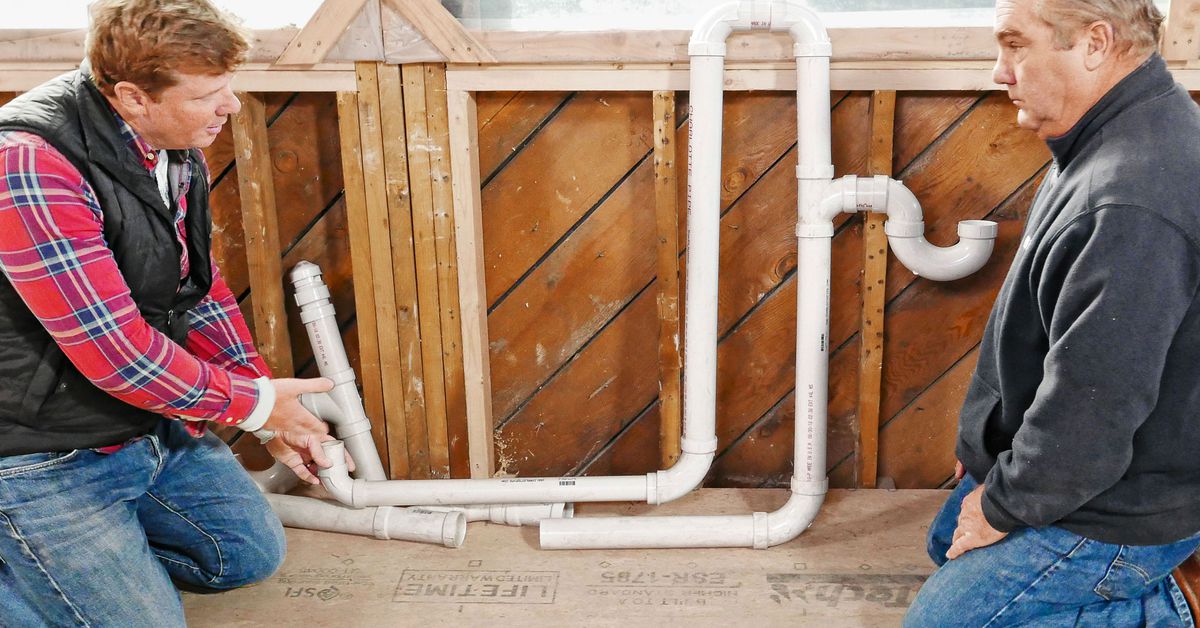Just how do you really feel on the subject of Why Do My Plumbing Pipes Make A Knocking Noise?

To identify loud plumbing, it is important to determine very first whether the unwanted noises take place on the system's inlet side-in various other words, when water is transformed on-or on the drainpipe side. Sounds on the inlet side have varied causes: excessive water pressure, worn valve as well as tap components, improperly linked pumps or various other home appliances, inaccurately positioned pipeline bolts, and also plumbing runs including too many tight bends or various other constraints. Sounds on the drainpipe side generally originate from inadequate area or, similar to some inlet side sound, a format containing tight bends.
Hissing
Hissing sound that takes place when a tap is opened a little generally signals excessive water stress. Consult your neighborhood water company if you suspect this problem; it will be able to tell you the water stress in your location and also can set up a pressurereducing valve on the incoming water supply pipeline if required.
Other Inlet Side Noises
Squeaking, squealing, scraping, snapping, and touching generally are brought on by the expansion or contraction of pipes, usually copper ones providing hot water. The sounds take place as the pipelines slide against loose fasteners or strike neighboring residence framework. You can usually identify the place of the issue if the pipes are exposed; simply comply with the sound when the pipes are making sounds. More than likely you will discover a loose pipeline wall mount or a location where pipelines exist so close to flooring joists or various other framing pieces that they clatter versus them. Affixing foam pipe insulation around the pipes at the point of contact should fix the problem. Be sure bands and also hangers are safe and secure as well as supply sufficient support. Where feasible, pipeline fasteners should be affixed to large architectural aspects such as foundation walls as opposed to to mounting; doing so lessens the transmission of resonances from plumbing to surfaces that can intensify as well as transfer them. If connecting bolts to framing is inescapable, wrap pipes with insulation or various other durable product where they get in touch with bolts, and sandwich completions of brand-new fasteners in between rubber washers when mounting them.
Fixing plumbing runs that deal with flow-restricting tight or many bends is a last option that needs to be carried out just after consulting a proficient plumbing professional. Unfortunately, this situation is rather common in older homes that might not have been developed with indoor plumbing or that have actually seen numerous remodels, especially by novices.
Chattering or Screeching
Intense chattering or shrilling that occurs when a valve or tap is turned on, which typically goes away when the fitting is opened completely, signals loosened or faulty inner parts. The remedy is to replace the shutoff or tap with a new one.
Pumps as well as appliances such as washing equipments and dishwashing machines can move motor sound to pipelines if they are improperly linked. Connect such items to plumbing with plastic or rubber hoses-never stiff pipe-to isolate them.
Drainpipe Sound
On the drainpipe side of plumbing, the principal goals are to get rid of surface areas that can be struck by dropping or rushing water as well as to insulate pipelines to have unavoidable noises.
In new building, bath tubs, shower stalls, bathrooms, and also wallmounted sinks and basins should be set on or versus resistant underlayments to lower the transmission of sound through them. Water-saving bathrooms and also taps are much less noisy than conventional models; install them instead of older types even if codes in your area still permit utilizing older fixtures.
Drainpipes that do not run up and down to the cellar or that branch right into straight pipe runs supported at floor joists or other framing present specifically troublesome sound troubles. Such pipes are big sufficient to emit considerable vibration; they also carry considerable amounts of water, that makes the scenario even worse. In new construction, specify cast-iron soil pipelines (the huge pipelines that drain pipes commodes) if you can manage them. Their enormity contains much of the sound made by water passing through them. Also, avoid routing drainpipes in walls shared with bedrooms and also areas where individuals collect. Wall surfaces having drains need to be soundproofed as was defined previously, utilizing double panels of sound-insulating fiberboard and also wallboard. Pipelines themselves can be wrapped with special fiberglass insulation made for the objective; such pipelines have an invulnerable vinyl skin (sometimes having lead). Results are not constantly adequate.
Thudding
Thudding sound, typically accompanied by shuddering pipelines, when a tap or home appliance shutoff is shut off is a condition called water hammer. The noise and resonance are triggered by the reverberating wave of stress in the water, which unexpectedly has no area to go. In some cases opening up a shutoff that discharges water promptly into a section of piping having a limitation, joint, or tee installation can create the exact same problem.
Water hammer can typically be cured by mounting installations called air chambers or shock absorbers in the plumbing to which the issue valves or taps are linked. These tools enable the shock wave created by the halted flow of water to dissipate in the air they have, which (unlike water) is compressible.
Older plumbing systems may have short upright areas of capped pipe behind wall surfaces on faucet runs for the very same function; these can at some point full of water, decreasing or destroying their performance. The remedy is to drain the water supply totally by shutting off the main water valve and opening all faucets. After that open the major supply valve and also close the faucets individually, beginning with the faucet nearest the shutoff and finishing with the one farthest away.
3 Most Common Reasons for Noisy Water Pipes
Water hammer
When water is running and is then suddenly turned off, the rushing liquid has no place to go and slams against the shut-off valve. The loud, thudding sound that follows is known as a water hammer. Besides being alarming, water hammer can potentially damage joints and connections in the water pipe itself. There are two primary methods of addressing this issue.
- Check your air chamber. An air chamber is essentially a vertical pipe located near your faucet, often in the wall cavity that holds the plumbing connected to your sink or tub. The chamber is filled with air that compresses and absorbs the shock of the fast moving water when it suddenly stops. Unfortunately, over time air chambers tend to fill with water and lose their effectiveness. To replenish the air chambers in your house you can do the following.
- Turn off the water supply to your house at the main supply (or street level).
- Open your faucets to drain all of the water from your plumbing system.
- Turn the water back on. The incoming water will flush the air out of the pipes but not out of the vertical air chamber, where the air supply has been restored.
Copper pipes
Copper pipes tend to expand as hot water passes through and transfers some of its heat to them. (Copper is both malleable and ductile.) In tight quarters, copper hot-water lines can expand and then noisily rub against your home's hidden structural features — studs, joists, support brackets, etc. — as it contracts.
One possible solution to this problem is to slightly lower the temperature setting on your hot water heater. In all but the most extreme cases, expanding and contracting copper pipes will not spring a leak. Unless you’re remodeling, there's no reason to remove sheetrock and insert foam padding around your copper pipes.
Water pressure that’s too high
If your water pressure is too high, it can also cause noisy water pipes. Worse, high water pressure can damage water-supplied appliances, such as your washing machine and dishwasher.
Most modern homes are equipped with a pressure regulator that's mounted where the water supply enters the house. If your home lacks a regulator, consider having one professionally installed. Finally, remember that most plumbers recommend that water is delivered throughout your home at no lower than 40 and no greater than 80 psi (pounds per square inch).
Whatever the state of your plumbing, one thing is certain — you’re eventually going to encounter repair and replacement issues around your home that require professional help. That’s where American Home Shield can come to your aid.
https://www.ahs.com/home-matters/repair-maintenance/causes-of-noisy-water-pipes/

Do you really like reading up on Why Do My Plumbing Pipes Make A Knocking Noise? Try to leave a short review down below. We will be delighted to know your responses about this blog posting. In hopes that you come back again before long. Loved our content? Please share it. Let another person locate it. Thanks a bunch for your time. Come back soon.
Schedule A Service Call
Comments on “Appliance Troubles? Why Some Problems Require an Experienced Plumbing Professional”